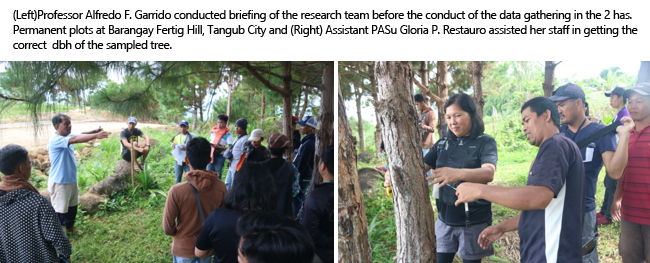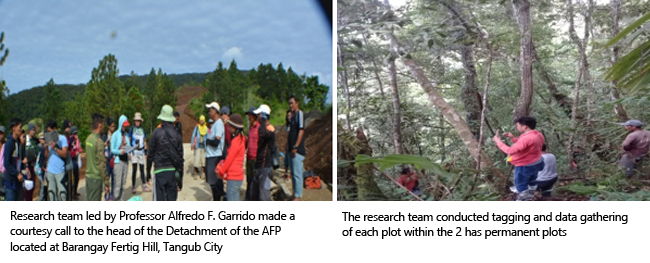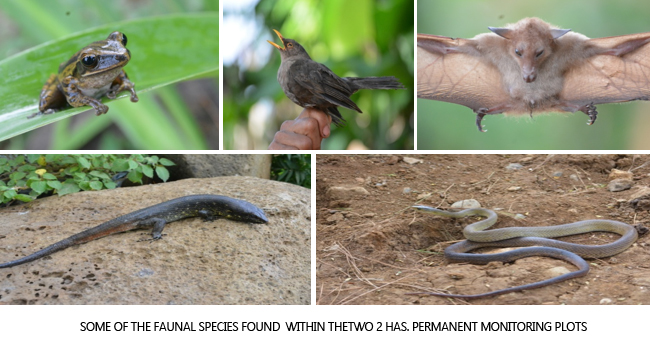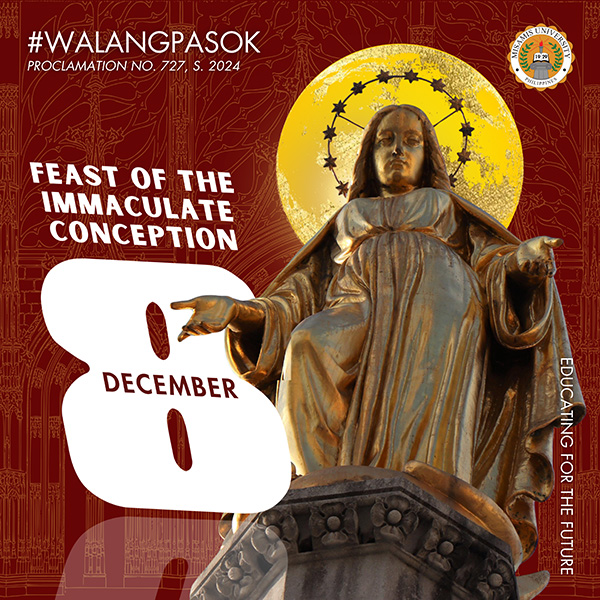
Misamis University Established Two Hectares Permanent Monitoring Plot in the Southern Part of Mt. Malindang Range Natural Park in Collaboration with DENR 10
The Misamis University Community Extension Program (MUCEP) was again,awardedof the Contract of Agreement for CY 2018 by the Department of Environment and Natural Resources-Provincial Environment and Natural Resources Office, Oroquieta City.The two hectares Permanent Monitoring Plots were established in the southern part of Mt.Malindang Range Natural Park in the province of Misamis Occidental to ensure and account its biological resources of the park. There is a need to establish baseline information and strictly monitor these resources for the protection and conservation of these finite resources.
The 2 hectare permanent monitoring plot is required for Protected Areas per BMB Technical Bulletin No. 2017-09 and was established based on the BMB Technical Bulletin No. 2016-05. This activity is under Part V, which pertains to Biodiversity Monitoring, specifically in item 5.2.2, with the sub-title establishment of Flora monitoring plot. Thisprompted the establishment of the same in Mt. Malindang Range Natural Park in the forest area of Brgy. Fertig Hills (formerly known as Hoyohoy), Tangub City, located in the southern part of the Protected Area adjacent to the forest area where the biodiversity assessment was conducted last year. The procedure of Long-Term Ecological Research Network (LTERN) was considered in this endeavor as required in the manual. Activities undertaken covered the establishment of the grid and marking of monuments and thereafter, the collection of data needed to generate the database.
A composite research team composed of experts from Misamis University led by EnP. Grace V. Villanueva,together with the technical support staff: Yunalyn L. Villantes, Jonas T. Hingco, Mark Anthony Manapsal, Alfredo F. Garrido, Eden C. Pito, and Bobby B. Alaman. It was also supported by 8 DENR-MMRNP PA Office staff, 16 BS Forestry practicumers from Jose Rizal Memorial State University (JRMSU) Katipunan Campus, and eight hired residents jointly established the 2 hectares permanent plots. The establishment and gathering of data through assessment of the floral and faunal composition of the 200 plots within the 2 hectares Permanent Biodiversity Motoring Area (PBMA) conducted last July 9-30, 2018.
Mr. A.F. Garrido created five teams in the field during the establishment of PBMA. To ensure that data gathering will be completed based on the scheduled timeline and maximum participation of each member of the research team. One team was assigned to conduct the layouts of the 200 plots. The remaining four teams composed of 5 to 6 members conducted floral assessment using GPS, compass, tape measure, nails, plain sheets, permanent marker pens, and forms. Data gathered includes the GPS reading of the corners and center of the plots, elevation, vegetation type, name of species, circumference, total height, merchantable height, bearing, distance, and remarks of the tree species inside the plots.
Gathered data were encoded and analyzed using the software. For the faunal assessment nets, pitfall and traps were used to capture the different types of animals found within the two (2) hectares permanent plots. Captured fauna was recorded and released after the morphological structure of the faunas recorded.
Results of the floral assessment revealed a total of 5,009 individual trees recorded covering 150 species. The trees with a diameter greater or equal to 10 cm dbh constitute 39% or 1,941 trees, and for less than 10 cm dbh covers 61% or 3,068 trees. The different attributes of trees recorded in the flora field data such as total height and diameter at breast height (dbh). The merchantable height of trees were included for trees with 10cm dbh and above. The classification scheme developed by Fernando et al. (1998) used in the interpretation of the Shannon diversity index. The result of biodiversity index computation revealed that five quadrats (107,169,9,167,146 ) display a diversity index with relative values of High, 86 quadrats with moderate relative value, 85 quadrats for low and 24 quadrats for very low, respectively. Nevertheless, the biodiversity index for the 2.0-hectare monitoring plot is 3.7 with very high relative value.
The most dominant species include Shorea contorta, Lithocaprus philippinensis, Helicia sp, Cinnamomon mercadoi, and Syzygium sp. These species are also considered vital for it registered the highest importance values among species in the permanent monitoring plot. There are eight (8) species listed under the International Union of Conservation of Nature (IUCN) with the following categories: Critically Endangered (6 species), Endangered (1 species) and Vulnerable (1 species). Under DAO 2017-11, five (5) species listed under the category of Vulnerable. The species categorized as critically endangered under the IUCN are Shorea contorta, Shorea squamata, Shorea negrosensis, and Shorea polysperma of Family Dipterocarpaceae.
Moreover, there are eight species considered by the locals as medicinal plants that can cure/ heal common ailments/diseases. These include Helicia Sp., Denrdocnide densiflora, Evodia bintoco, Lithocrapus sp., Ficus septica, Luecosyke capitellata, Melastroma malabrathricum, Nuaclea orientalis, and Villebrunea sp. An initial inventory was conducted to present the importance of these species to the community. The team highly recommended that a study on propagation and harvesting should be done for its sustainable use.
Faunal assessment disclosed a total of 125 vertebrate species was recorded in the two-hectare permanent plot. These include 16 amphibians, 20 reptiles, 74 birds, and 15 mammals. Of the species recorded, 66 or 52.80% are endemics, of which 27 (40.91%) are Mindanao endemics. Furthermore, the study recorded six Malindang endemics, including one amphibian (Philautus surrufus) and five birds (Aethopyga boltoni malindangensis, Dicaeum anthonyi masawan, Dicaeum hypoleucum mindanense, Malindangia mcgregori and Turdus poliocephalus malindangensis). Of the vertebrates recorded, nine species composed of one endangered (Penelopides panini affinis) and eight vulnerable (Philautus acutirostris, Hydrosaurus pustulatus, Ophiophagus hannah, Otus gurneyi, Bubo philippensis, Actenoides hombroni, Buceros hydrocorax, and Sus philippensis) species considered by the IUCN (2018). The DAO 2004-15 listed a total of 30 vertebrates (one critically endangered, 11 endangered (II), one endangered, eleven vulnerable, and six other threatened species). On the other hand, CITES (2014) also considered 19 species of vertebrates, of which 18 are assessed as under Appendix II while one as Appendix I.
Misamis University, through the dynamic leadership of Dr. Karen Belina F. De Leon extends its sincerest thanks to DENR led by PENR Officer Rey S. Fernandez for the financial support in the undertaking of the said activity. MU is hopeful that the results of this assessment will be helpful to the DENR, academes, CSOs, and LGU for the protection and conservation of biological resources of Mt. Malindang. Further, the research team recommends that concerned LGUs will adopt the identified critically endangered species under Section 35 of RA 9147, also known as the Wildlife Act of 2011.




Announcement

|

|

|
Photo Gallery
 2025 Cheerdance Competition
2025 Cheerdance Competition
|
 96th Foundation Anniversary Parade 2025
96th Foundation Anniversary Parade 2025
|
 International Conference on Biodiversity and Climate Change 2025
International Conference on Biodiversity and Climate Change 2025
|
Videos

|

|

|















